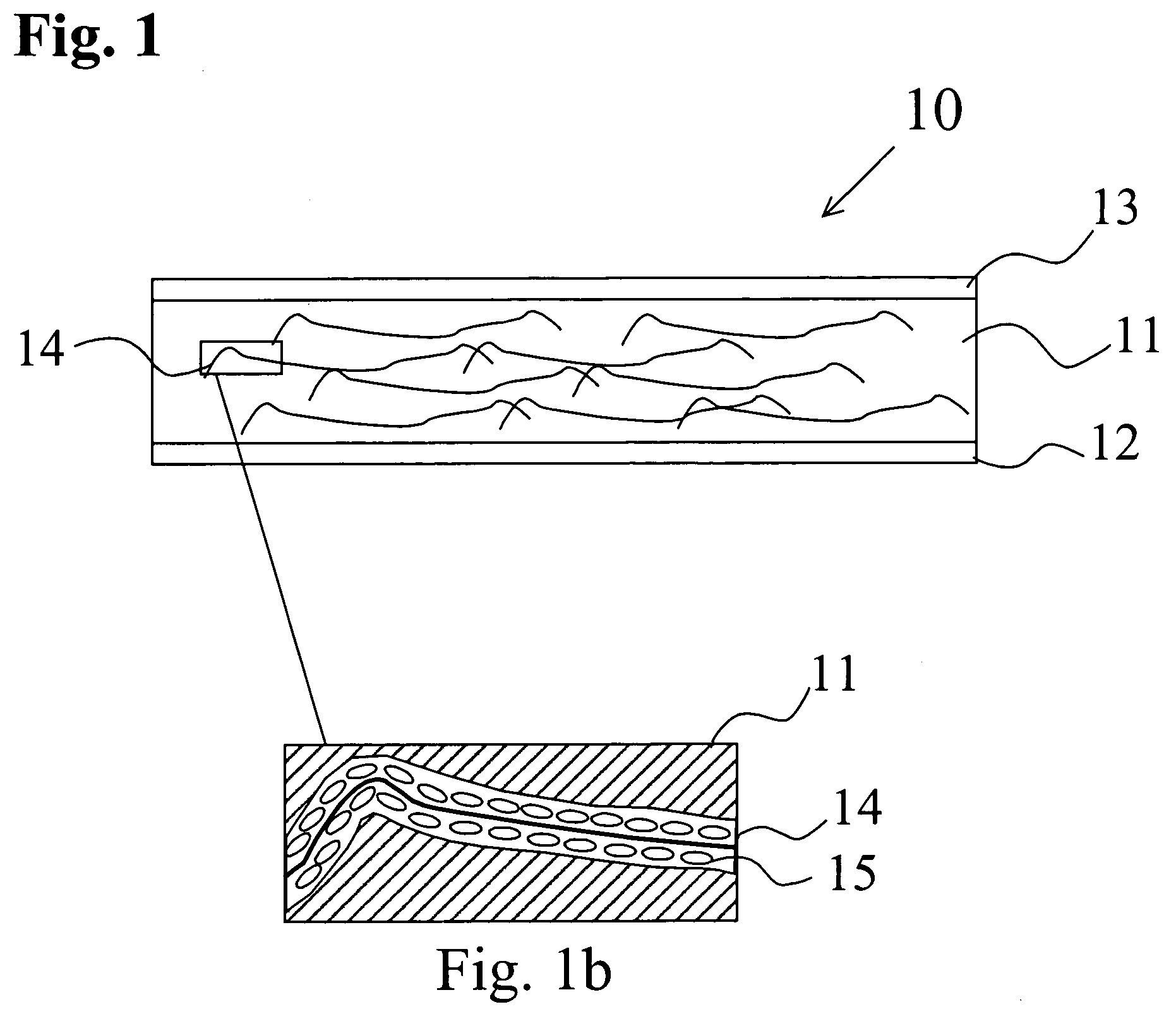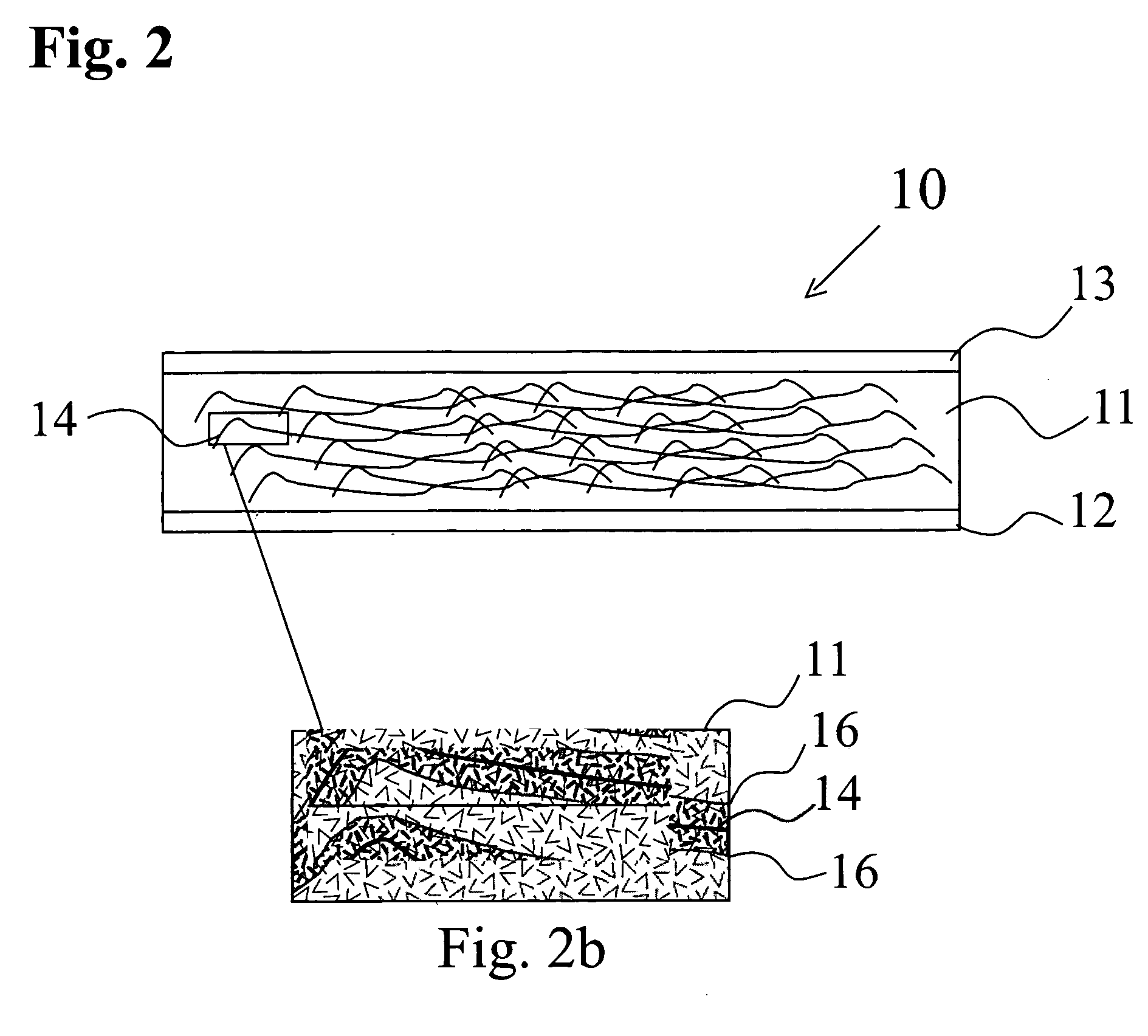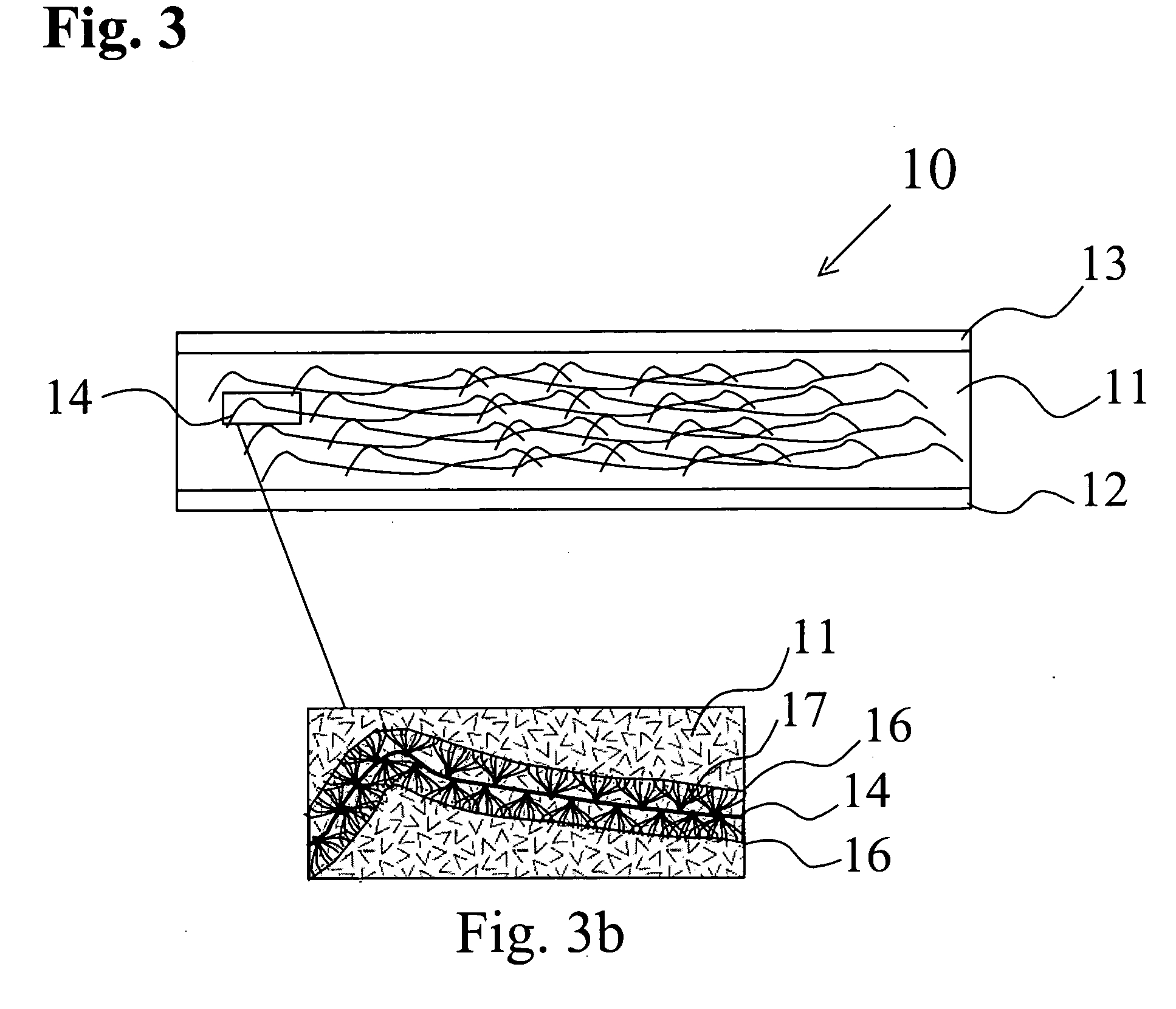Silane based coatings on glass fiber reinforcements in gypsum board
a technology of gypsum board and glass fiber, applied in the field of gypsum board, can solve the problems of poor retention of cement or water thereon, inhibiting the removal of water, and replacing asbestos fibers with glass fibers that do not have the expected effect, etc., to achieve improved flexure resistance, improve gypsum nail pull resistance, and high strength
- Summary
- Abstract
- Description
- Claims
- Application Information
AI Technical Summary
Benefits of technology
Problems solved by technology
Method used
Image
Examples
Embodiment Construction
[0032] The present invention provides gypsum board and other hydraulic set and cementitious boards having glass fibers coated with a silane based sizing. The sizing is separately applied to individual glass fibers with the glass fibers forming a bond with the gypsum matrix during the curing of the gypsum board. The glass fibers coated with the silane based sizing may be incorporated into the wet gypsum mix during the mixing of an aqueous slurry. Alternatively, the silane coated glass fibers may be incorporated into the gypsum matrix in the form of organized structures, such as mats, as layers within the cast wet gypsum mix. Silane based sizing could be created from a variety of silane based compositions.
[0033] Gypsum board production has historically used low levels of sized glass fibers to provide fire resistance. In the absence of glass fibers the calcium dihydrate structure of gypsum boards starts to release the water of hydration at a temperature as low as 176° F. The boards su...
PUM
| Property | Measurement | Unit |
|---|---|---|
| Thickness | aaaaa | aaaaa |
| Electrical resistance | aaaaa | aaaaa |
| Strength | aaaaa | aaaaa |
Abstract
Description
Claims
Application Information
 Login to View More
Login to View More - R&D
- Intellectual Property
- Life Sciences
- Materials
- Tech Scout
- Unparalleled Data Quality
- Higher Quality Content
- 60% Fewer Hallucinations
Browse by: Latest US Patents, China's latest patents, Technical Efficacy Thesaurus, Application Domain, Technology Topic, Popular Technical Reports.
© 2025 PatSnap. All rights reserved.Legal|Privacy policy|Modern Slavery Act Transparency Statement|Sitemap|About US| Contact US: help@patsnap.com



